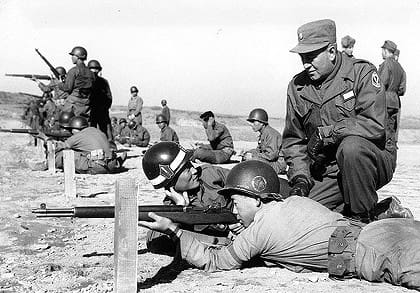A member of TTAG’s Armed Intelligentsia sent us a copy of an AFP story from September 23, 2009. It puts the tussle over the increasingly infamous South Korean rifles into a new (for us) perspective. “South Korea’s defence ministry said Wednesday it plans to raise tens of millions of dollars by selling more than 100,000 ageing US-supplied rifles to gun enthusiasts in the United States. Washington has approved South Korea’s plan to sell about 86,000 M1 and 22,000 carbines together valued at 130 billion won (108 million dollars), the ministry said.
‘The US government recently approved our plan to sell old M1 and carbine rifles, which were given to our soldiers as part of a US aid programme,’ a ministry spokesman told AFP. The military will dispose of all its M1s but will keep about 640,000 carbines for reserve forces, the Chosun Ilbo newspaper said.”
Spock! Analysis.
It seems that the U.S. government approved the sale—which mushroomed to include all the old guns—until it didn’t. Which is just as well; author Daniel Gallington recently revealed that the guns never belonged to the South Koreans in the first place.
We’ve also cast our eyes on another piece of the puzzle: a memo from the Bureau of Alcohol, Tobacco, Firearms and Explosives (ATF) that put the kibosh on the sale. This is the source of the statement Click here to check it out.
My take: the memo seems to confirm my suspicion re: Uncle Sam’s primary concern: not flooding the U.S. market with cheap rifles. Which does nothing to quell the thought that U.S. rifle makers worked behind the scenes to stop the sale. Which shouldn’t have been a sale in the first place.
Which would explain the National Rifle Association’s (NRA) refusal to publicly acknowledge the info about the gun’s true owners (you and me) that Gallington broke yesterday. The author told me that he told the NRA about the guns’ legal status weeks ago. Without response.
Curiouser and curiouser.





Linkt to BATF memo does not work for me, may for others.
NukemJim
I am not 100% sold on Gallington's assertion that the rifle are US property. My understanding is the Koreans have rifles received through the MAP and rifles they purchased. And no one is really sure sure which is which, and even exactly how many fall into either category. This would explain why the Koreans were allowed to sell rifles back in the 90's (the Blue Sky imports).
Rob
"Which does nothing to quell the thought that U.S. rifle makers worked behind the scenes to stop the sale."
Rubbish if I have ever read it. Logic has already quelled the thought in the minds of the rational.
Do you really think that Remington, Smith and Wesson, or Winchester are even remotely threatened by a bunch of old rifles which even you asserted to be derelict and undesirable? Have ever talked to a fellow firearm enthusiast who was debating his next purchase to be either a worn out M1 Carbine or a new Weatherby? Troll if it gets you more page views, but I contend that readership is much more loyal to quality over time than sensationalism.
Comments are closed.